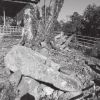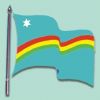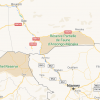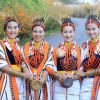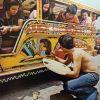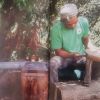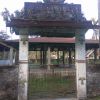The search found 32 results in 0.016 seconds.
Search results
Out of 16 recognised tribes of Nagaland, the Aos are considered as the second largest ethnic group. Chungliyimti, the watershed village in Nagaland holds the symbolic significance behind the legendary folk tale of the ancestry of the Aos. It is believed that the ancestors of the first tribe to embrace Christianity in Nagaland ; i.e the Aos emerged from the six stones which are still in the village of Chungliyimti.
One of the first women to ever weave the Naga national flag, Lathon Kemp, passed away on the 5th of January, 2021. The news of her death brings to mind the flag and the very important place it holds in the life of the Nagas. Although, it was hoisted for the first time on the 22nd of March in 1956 in the Parashen-Rengma region, the Nagas believe the flag to have a divine origin and not designed by any mortal. A red, green and yellow rainbow is spread out against a field of blue which represents the sky.
I was about four and a half years old when my family moved down from the dunes to the shores of Gaaway – the name for the Niger River from Gao to Niamey. The distance itself happened to be very short, but it marked a shift in my life. It was the moment I stopped speaking Tamashek (Tuareg language) and picked up Songhay. Thus I changed landscape, language and worldview. Years later I would be reminded that I used the words for the wild plants of the grazing plains for the riverside crops.
Despite “customary” restrictions, Naga women have successfully paved their way in various fields ranging from politics to literature. In the field of music, we have the Tetseo Sisters, a quartet of four siblings (Alunë or Lulu, Kuvelü or Kuku, Mütsevelü or Mercy and Azi Tetseo) who, through their music and storytelling, celebrate the beauty of the hills and valleys of their native place. Belonging to the Chakhesang tribe and based out of Kohima, the band was formed in 1994 and they strive to preserve the tradition of "Li", which in the Chokri Naga language means "folk songs".
In the process of breeding the indigo vat, we noticed a fermented smell unique to indigo, and experienced the process of indigo becoming a dye through fermentation. We also noted the color cange from green to blue in the oxidation process. We used shibori resist dye techniques for the dyeing process. We applied pressure to the cloth using boards or strings and create a resist. We thought it would be ideal to show contrast between the indigo and the white of the fabric to accentuate the beauty of the blue.
Pha hol is the name for an ikat-patterned silk cloth woven among ethnically minoritized Khmer communities in today's Thailand, especially in Surin and Buriram provinces. Hol is "the Queen of Surin silk" many say -- the most beautiful, locally meaningful pattern. Calling hol a Queen draws attention to its creation and use primarily by women.
[ _ a note ]
This time, the trip to the Netherlands reminds me of my life in Palestine.
Pictured in the first photograph is pictured the champorado, a Filipino dessert dish made of sticky rice and tablea (tablets of ground roasted cocoa beans) and topped with milk and sugar. The champorado is often served for breakfast or merienda (afternoon tea), and is served alongside dried fish as a salty balance to the dessert’s sweetness.
The first photograph was one taken by Italian actress and photojournalist Gina Lollobrigida in 1975 Cubao, a district within Quezon City, one of the most populated cities in the Philippines. The photograph captures 6 onlookers (including the driver) watch as an artist paints onto the driver’s jeepney a man blowing wind into the mountains while the sun rises. The other photograph, of jeepney artist Vic Capuno in 2018, shows him painting a monster truck onto the side of a jeepney in his San Pedro workshop.
This photograph, taken from the Philippine National Commission for Culture and the Arts (NCCA)’s book on living traditions in the Philippines, is of a trainee artisan as he pounds a brass plate into the shape of a gangsa, a round, smooth-surfaced handheld gong used by the Cordillera peoples in the Benguet region of Luzon.
Bakhri II
The community Bakhri (Granary) at Thuribari, Kokrajhar, is one of the few such Bakhris seen nowadays in Assam. Community Bakhri is representative of a communal living and sharing. Located in an open village space just opposite the Brahma temple, these three small raised mud houses look ordinary but the significance and relevance of them in Thuribari community life is clearly visible from the well-maintained condition of it.
This is a choir from the Chedema Baptist Church singing on the occassion of the 69th Naga Plebiscite Day.
It talks of a creator, Christ in heaven, who be praised and who blesses the congregation to stay together as one.
The Naga nation is that one holy congregation which seeks to remain as one, together in its mission to spread the word of God.
Pages

